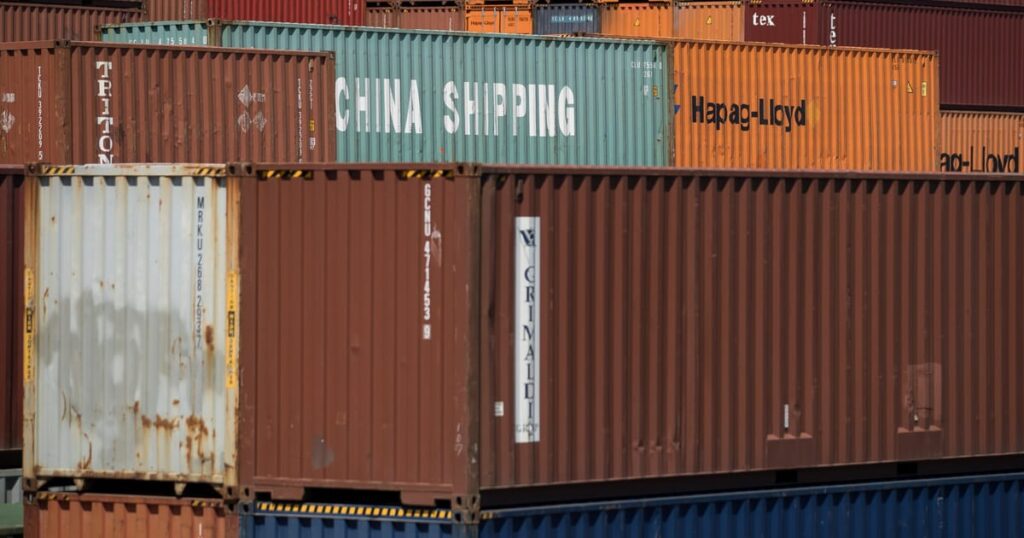Andreea Brinza is vice president of the Romanian Institute for the Study of the Asia-Pacific.
Soon after its inception in 2012, China’s then 16+1 mechanism for cooperation with Central and Eastern Europe (CEE) was deemed by some observers as a divide et impera strategy against the European Union.
But what a difference a decade makes, as it is, ironically, Western Europe that’s now putting the Continent’s unity on China to the test.
Regarded as small, in need of money, plagued by democratic issues and easy to influence, CEE countries were once seen as Beijing’s Trojan horse in Europe. And there were fears that a flood of Chinese investment would buy political influence, threatening the bloc’s cohesion when it comes to China — but that’s not how it happened.
Firstly, China didn’t deliver on its promises. With CEE countries only getting around 10 percent of promised investments between 2000-2022, China had a negligible economic footprint in most of these nations. But more importantly, most CEE countries weren’t politically involved with China — they were just looking for economic ties. And due to the region’s Communist past, large segments of CEE countries remained wary of such cooperation.
Furthermore, Beijing focused on building its bilateral relations via the leaders in power and select politicians. So, when China-friendly leaders left office, governments ended up pulling U-turns — a switch facilitated by few economic strings keeping them attached. And today, Hungary remains China’s only success story in the eastern half of the EU thanks to Prime Minister Viktor Orbán’s government.
This wasn’t the case in Western Europe, however, where the fear of Chinese influence and European division initially focused on CEE ended up coming to life instead.
Of the €147.2 billion of Chinese investment made in the EU between 2000 and 2022, 62 percent went to Germany (€32 billion), France (€17 billion), the Netherlands (€13.7 billion), Italy (€16 billion) and Finland (€13 billion), in some cases creating, if not economic dependencies, then at least a desire to protect economic ties and a fear of retaliation from Beijing. And when it comes to investment or exports to China, the cleavage between the Continent’s west and east is even wider, adding to Western Europe’s desire to protect economic links.
This, in turn, has led to the reality that some of the governments that are most hawkish on China, and are pushing the EU toward a tougher stance, now come from CEE. Their concerns regarding the country were greatly amplified by Russia’s invasion of Ukraine and China’s tacit support of Russia, shifting their view of Beijing mostly toward that of a systemic rival.
On the other hand, Western Europe still views China through the triptych lens of partner, economic competitor and systemic rival. Even the war had a different impact on some of the region’s decision-makers, like French President Emmanuel Macron and German Chancellor Olaf Scholz, who both traveled to Beijing, emphasizing the need to engage China to prevent it from supporting Russia. Both leaders were criticized for bringing business delegations along with them, and Macron drew further attention with his comments on “strategic autonomy” and“crises that are not ours.”
While Macron went to China with European Commission President Ursula von der Leyen, however, the trip didn’t result in the intended impression of unity, as Beijing treated the two leaders quite differently. And the bloc’s divisions don’t stop there either, as its two most important leaders are also at odds. The notorious competition between von der Leyen and European Council President Charles Michel has now spilled over to the subject of China, with the most recent European Council summit highlighting the difference between von der Leyen’s continued emphasis on de-risking and Michel’s softer tone, focused on cooperation.
But the bloc isn’t alone in its lack of unity. This issue is plaguing the EU’s largest country too, as the German government is divided on China. While Scholz is interested in preserving economic ties, many coalition partners are prioritizing de-risking. And after months of postponements and numerous dilutions of its original draft, Berlin has recently published its national China strategy, which tries to balance a more pro-China business approach with a more China-skeptical governmental stance.
For years, CEE countries were blamed for being a Trojan horse that China could use to disrupt the EU. Yet, it is ultimately this region that’s now become more vocal in criticism of China. Meanwhile, Western Europe’s economic ties to the country have continued to strengthen over the past decade. So, while the EU now looks to de-risk from China, it’s important to remember that the greatest risk to unity rests in the west and not the east of Europe.

